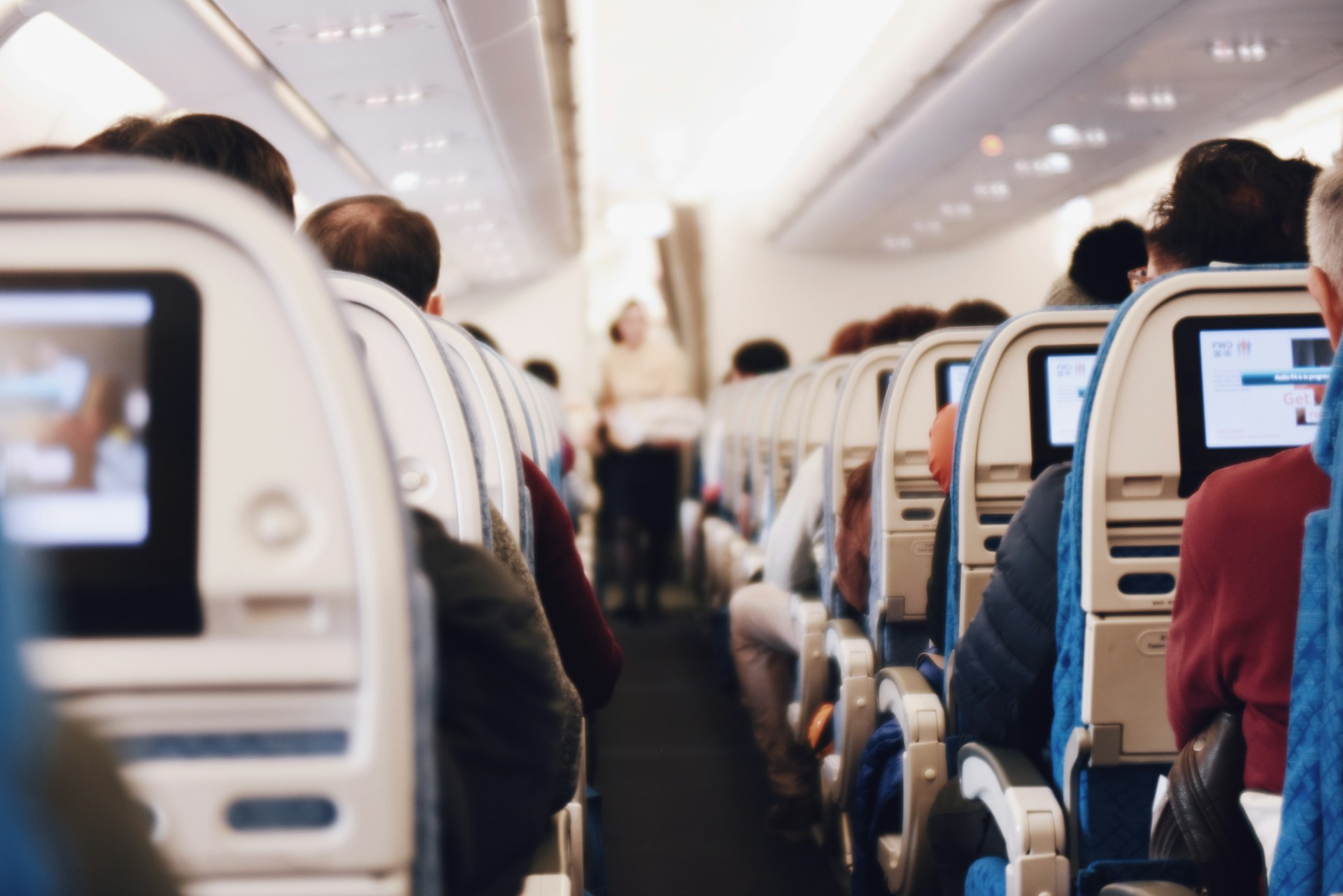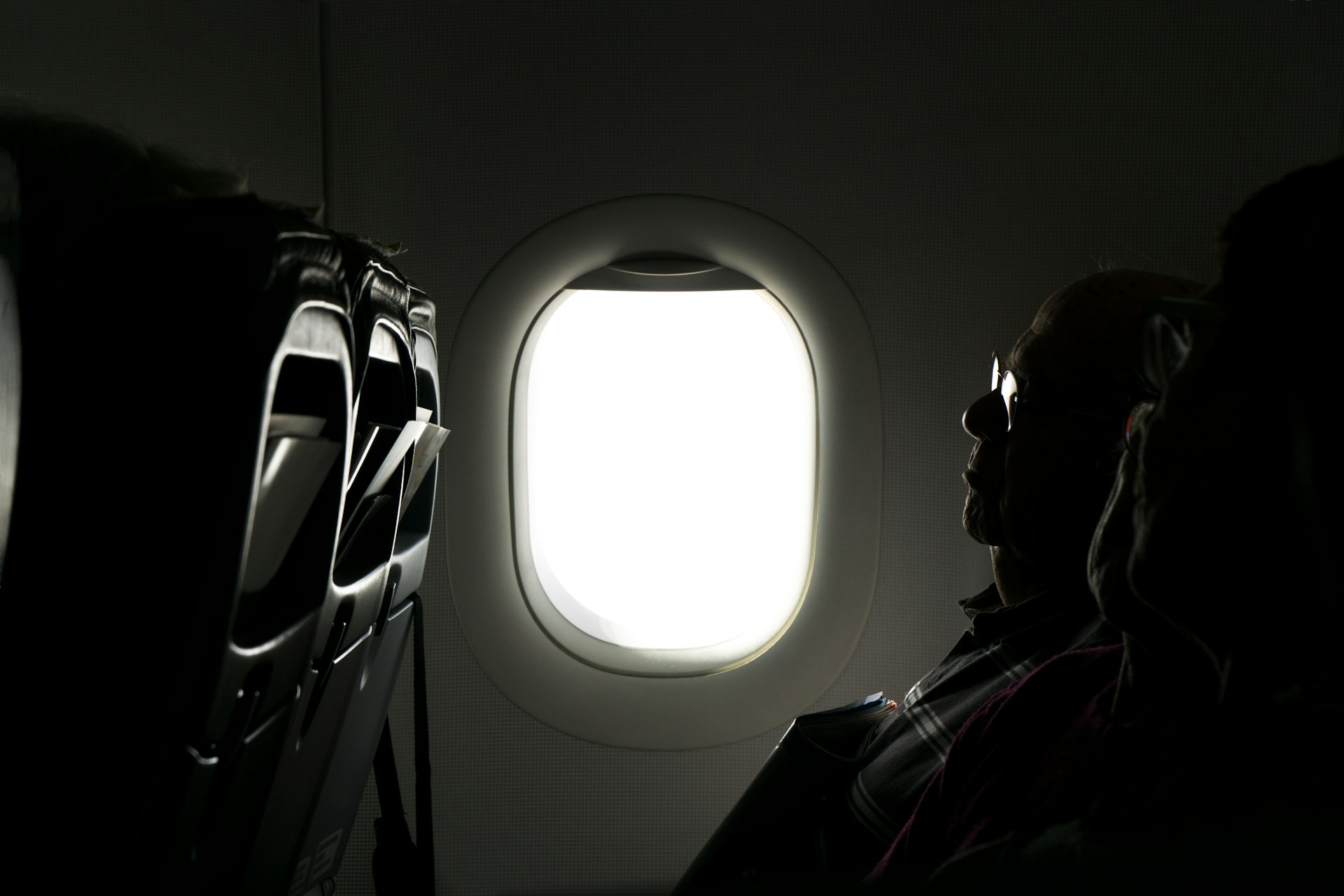Aeroplanes are unique environments. The air inside the cabin is usually recycled and filtered to maintain a comfortable atmosphere for passengers. It goes through a special system that includes High-Efficiency Particulate Air (HEPA) filters, which can remove up to 99.97% of airborne particles, including viruses and bacteria.
However, despite this filtering system, there are still risks for infection. The seating arrangement, duration of the flight, and the fact that passengers are in close proximity to each other can lead to infections, as respiratory viruses spread more easily in crowded spaces.

Air Circulation
Aeroplanes use a combination of fresh and recirculated air. The fresh air comes from outside and is mixed with the air already in the cabin. This fresh air is drawn in from the engines at high altitudes, where the air is cleaner and less polluted.
The cabin’s airflow system is designed to move air from the ceiling to the floor, which helps limit the spread of germs by pushing potentially contaminated air away from passengers. The cabin air is also completely refreshed every few minutes, ensuring that the environment remains as clean as possible.
This effective circulation system helps reduce the risk of airborne infections during a flight.
Duration of Flight
Longer flights mean you spend more time around other passengers. The more time you are on the plane, the higher the chance of being close to someone who is coughing or sneezing.
Even with good air circulation, being on a plane for many hours can increase the risk of catching germs. That is why it is important to be careful about your hygiene during long flights.
Passenger Behaviour
What passengers do can also affect the risk of infection. Actions like coughing, sneezing, and talking can spread germs into the air. If someone does not cover their mouth or nose when they cough or sneeze, it increases the risk for everyone nearby.
Simple actions, like using a tissue or elbow to cover sneezes and coughs, can help keep everyone healthier during the flight.
Seating Arrangement
When people sit close to each other, it is easier for germs to spread. If someone nearby is sick, they can easily pass on germs to others around them through coughing, sneezing, or even talking.
The close distance means that even small droplets in the air can reach other passengers quickly. Choosing seats that are farther away from others, if possible, can help reduce the chance of getting sick during the flight.

To reduce the risk of infection while flying, consider the following precautions;
Wear a mask - Masks can help prevent the spread of germs, especially in crowded spaces. It helps reduce the risk of inhaling respiratory droplets.
Practice good hygiene - Wash your hands regularly with soap and water for at least 20 seconds. If soap and water are not available, use hand sanitiser with at least 60% alcohol.
Avoid touching your face - Touching your eyes, nose, or mouth can transfer germs from your hands to your face. Try to avoid this habit, especially when in public spaces.
Choose your seat wisely - If possible, choose a window seat. Research shows that passengers sitting by the window are less likely to be disturbed and may have a lower risk of exposure to others.
Stay home if you are sick - If you are feeling unwell or have symptoms of a contagious illness, it is best to postpone your trip. This will not only protect you, but it will also protect fellow passengers.
If you want the latest information on the best Hotel Executive Club Lounges, Hotel Kids Clubs and other travel information, be sure to sign up for our free newsletter full of tips and great travel ideas.